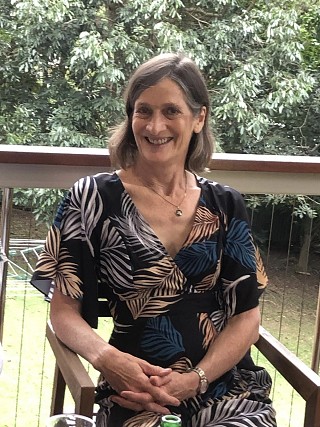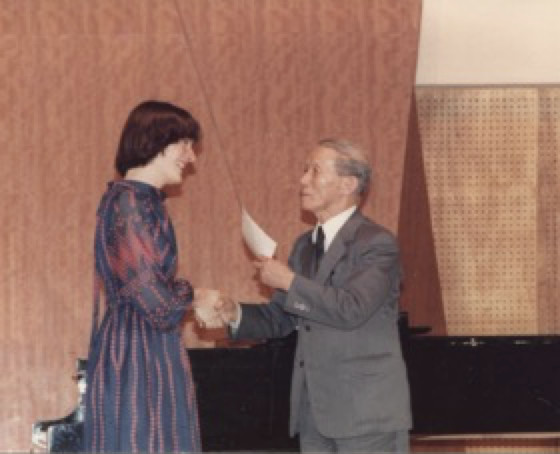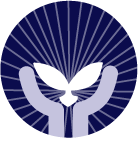Lesley Priest

Upon my return to Australia (after Japan), I took the opportunity to reside in rural New South Wales in the regional town, Tamworth. Tamworth had a very strong Suzuki programme, established by Marjorie Hystek (Vale), who in the early 1980s undertook her own studies in both violin and piano in Matsumoto. In her absence, an exchange teacher programme saw her students taught by Japanese graduates. Upon my departure, the studio was then taken over by Haruo Goto and his wife, Jennifer.
Having married, we moved to a coastal town, Port Macquarie, where I started up my own studio. My own three children were amongst my family of “Suzuki” students. Over the decades, I have thoroughly enjoyed working with students of all ages. Many have worked towards their Suzuki Graduation levels and have been delighted to perform at the Sydney Opera House annual Graduation concert.
As promised in the pledge I made to Dr. Suzuki at my graduation recital all those years ago, I continue to engage in Teacher Training and Professional Development, not only in the Suzuki Association, but also through AUSTA (Australian String Association) and any other opportunities that arise. In recent years, I engaged and completed studies for my Bachelor of Music degree.
I will continue to teach while I both enjoy the interactions with students and their families and make a valuable contribution to the enrichment of their lives.
Name in Japan: Lesley Janine Priest
Instrument studied in Japan: Violin
Dates in Japan: mid-January 1980 – end of June 1982; Graduation Recital date: 14 May, 1982
Memories
General Thoughts
The idea of going to Japan to study with Dr. Suzuki was at the suggestion of my (Suzuki) violin teacher, Ms. Randy Ingram, when I expressed an interest to pursue teaching violin as a career. For a period of time, I accompanied her to adult beginner classes to both observe and assist and found it to be both challenging and rewarding.
In 1979 (while in my final year of high school) I enrolled in the Primary Suzuki Method Accreditation, directed by Mrs Lois Shepheard – herself a Matsumoto graduate. We participated in weekly evening sessions in which we studied the Suzuki philosophy, methodology and repertoire.
At that time, Lois’ daughter, Cathy Shepheard, (with whom I was familiar as a fellow member of the Melbourne Youth Orchestra, though not familiar as a friend) was already in Matsumoto undertaking her course of study. Having Cathy there already gave my parents the assurance they needed that it was a safe and wonderful opportunity for me also, and I engaged in the formalities of acquiring the necessary documentation -- a visa, a letter from Dr. Suzuki as my guarantor, and a 12-week crash course in the basics of the Japanese language. I was still only 17 years old, turning 18 at the end of April.
On my behalf, Cathy had secured the lease of an apartment alongside her room in the Tanaka-Apāto complex located on the Suzuki-gawa, just a short bicycle ride from the Talent Education Institute. Some other Suzuki kenkyusei also resided there – Huub de Leeuw (piano), Fujita-san (viola) -- so it was quite the musical residence. We often socialised together in the apartments over dinner parties, and because Huub had a television, we were able to watch the wedding of Charles and Diana.
Although each apartment had a small kitchenette, we often frequented a ramen restaurant across the river, which served inexpensive delicious and nutritious food. Typically, our apartment building had no shower or bath facility, so a bicycle ride ensued to the local onsen. My very pale skin was a fascination to the elderly ladies who would offer to scrub to exfoliate the red sunburn I managed at times to procure.
Cathy introduced me to two Japanese high school girls she had befriended, who practised their English language while we, at the same time, enhanced our Japanese. They also taught us how to sew a yukata garment – all stitched by hand!
Cathy had also a network of Japanese employees from a local company who often invited us to outings including day and overnight hikes and skiing trips in the nearby alpine region.
Life was good and certainly I felt safe and secure while living in Japan.
Instrumental Study
Lesson Thoughts: Tone, tone, tone was certainly the focal point of each lesson which commenced with either tonalisation or a Judas Maccabaeus, followed by what seemed to be much less time spent on a piece I had been assigned to learn. In all, a weekly lesson might have been no longer than 20 minutes in duration, but felt like an hour of intense concentration and effort. When given a new piece, a lot of work ensued in that initial week to obtain a copy of the sheet music and an audio copy on cassette tape, as well as to learn as much as possible to present by memory and at a reasonable speed at the next lesson in just a week’s time. I was practising four hours each day as well as attending orchestra rehearsals and group sessions. I recall that during a lesson when I was playing the 3rd movement of the Mendelssohn Concerto, I felt so ashamed (a strong word) that I could not keep up with the recording of Kreisler, and ran out of the room in tears. Dr. Suzuki came to me and reassured me that Kreisler did indeed play quickly but for me to keep trying and to listen more, and in time, I could aspire to play with Kreisler. Suzuki-sensei really was a compassionate and patient person.
As I rose in the ranks and became the gaijin violin kenkyusei who had been there longest, I was first in the line-up for lessons on a Tuesday morning. The concept of a private lesson entailed the presence of other foreign violin and viola students in the teaching room, observing and taking notes as they each awaited their turn. Once all lessons were completed, we would retire to the large student room to share notes we had each taken for the others and discuss the focal points Dr. Suzuki had made and run our fingers over the techniques taught.
Monday Concert was the opportunity for each kenkyusei to perform. Most of the pieces presented were from the Suzuki repertoire. As an extra challenge, all gaijin had to announce in Japanese and if I recall correctly, the Japanese had to announce in English. The piano kenkyusei were especially busy with the demands of not only presenting their own solo but accompanying the other instrumentalists. It was always a pleasurable experience being seated in the kaikan auditorium hearing each other perform and witnessing the growth in confidence and musicianship of many of us who were once shy and felt incapable of aspiring to Kreisler’s astonishing capabilities.
One mantra of the Suzuki Method is the benefit of repetition. So, in my early months before I had acquired much Japanese language, during the weekly group sessions, I used to switch off when Dr. Suzuki changed from English to Japanese, because in my ignorance, I thought he was repeating himself. Wow, I was so wrong! He would present his dialogue effortlessly and (perhaps) unconsciously switching languages, and even including some German along the way. I learned to listen intently and later conferred with other students or checked my dictionary for new vocabulary.
In a different experience, the calligraphy teacher for our weekly classes was a dear little Japanese lady who would speak continuously in quiet Japanese, which I was not able to understand. She did convey her instructions by demonstration and gently manipulating the brush in our hands and guiding the strokes. I felt tremendously honoured to attend her premises when preparing my Graduation scroll. I conveyed that I wished to write about autumn – my graduation month of May is autumn in Australia. I felt a sense of achievement that during the writing of my scroll, my hand no longer shook as it had when a complete novice to the discipline of calligraphy.
Photo in Japan

Lesley with Dr. Suzuki at graduation

